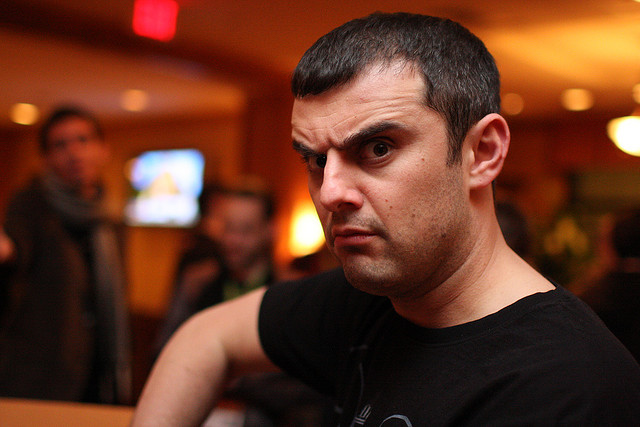Self-Branding

Gary Vayerchuk, self-branding guru
Alice E. Marwick's (2013) chapter on personal branding examined these promotional practices on social media as applied to more average Web 2.0 users. Marwick argued, "the personal brand extends to individuals the philosophy and tactics of contemporary 'promotional culture'" (p. 165), through which marketing strategies are applied to the individual. Marwick's analysis included a number of self-help books, particularly those by Gary Vaynerchuk and Tim Ferriss, that advised individuals to find their passion and turn it into a career by uploading content (blog posts, videos, and other material) and promoting it online in their free time. Such tactics, Marwick noted, come from a position of privilege, apply only to those working in knowledge industries, and can only be practiced by those without family and caretaking responsibilities. These books, Marwick argued, "are instruction manuals for surviving without an economic safety net" (p. 181). Not only does this practice of self-promotion perpetuate a culture of free labor, Marwick argued, it also reflects a belief in a meritocracy. Those who are successful through this type of self-promotion are those believed to be the best and those that worked the hardest for it.
Through detailed interviews with those engaged in self-branding, Marwick described many of the practices self-branders within the tech industry engage in, including individuals like Ariel Waldman, Tara Hunt, and Anu Nigam. Using a distinct username across all social media platforms, cultivating central web presences through a website and/or a blog, and disseminating this information widely, self-branders measure their worth in metrics of attention: numbers of friends, follows, likes, and shares (p. 187). Like micro-celebrities, self-branding practitioners emphasize the positive and authentic aspects of their personas and also practice what Marwick called "brand monitoring" (p. 190). Using Google Alerts and carefully curating Twitter feeds and tagged photos, Marwick's participants described policing friends' photos and other content to remove anything that might be potentially damaging or simply not fitting with their brand's persona. Marwick did not subscribe to a technological determinist point of view here, but instead suggested that while Web 2.0 presents a wide array of different possibilities for self-presentation and expression, most individuals choose self-branding strategies for social circumstances:
Social media allows people to strategically construct an identity in ways that are deeply rooted in contemporary ideas that the self is autonomous and constantly improving. But it is Web 2.0 culture that encourages this behavior by advancing a particularly neoliberal conception of the "enterprising self," one that advocates the use of technology for identity creation and presentation. (p. 192)
Marwick argued that today, self-presentation is more important than traditional means of career development. More important than receiving professional credentials or working one's way up through an organization, the level of interest one generates in social media is a more important indicator of success.
Self-branding strategies are ultimately disrupted by more personal and social connections, and the places at which personal identities, personal activities, and professional and brand activities bleed into one another often create problems for those managing branding strategies on social media. Marwick and danah boyd (2011) have called this phenomenon context collapse, where one's contacts from different aspects of their lives combine into one list of friends or followers, blending these social contexts in often challenging ways.
In these chapters, Marwick actually theorized little about the performance or construction of identity through social media. While she described some of the self-branding and promotional activities of her participants, she did not ground this discussion in theories of identity or self. This aspect of her work, then, remained descriptive and often self-reported. While this was an excellent description of self-branding within Silicon Valley, writing researchers will also be left wondering how much of these self-branding practices are taken up, subverted, or resisted by a larger segment of social media users. Marwick's conclusions about the ways in which social media construct selves, then, seem best limited to those connected to the tech community rather than applied to social media users at large.